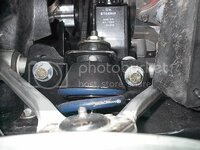69427
The Artist formerly known as Turbo84
Just coming up with my list of winter projects (now that I'm back in the midwest and expecting to be snowed in for a while). One item I'm curious about is the affects of antidive. I've got some decent rate front springs on the car, and don't know how much the anti-dive is doing for me. I'm also curious if I'd see any handling benefit from reducing the amount of anti-dive in the front suspension. My suspension textbooks are pretty slim on the downsides of anti-dive, but also note that most racecars don't use anti-dive. If there were no downside to anti-dive I would think that it would be added to racecars as a "freebie" (whether it was needed or not).
So, any thoughts on this topic?
Thanks,
Mike
So, any thoughts on this topic?
Thanks,
Mike

